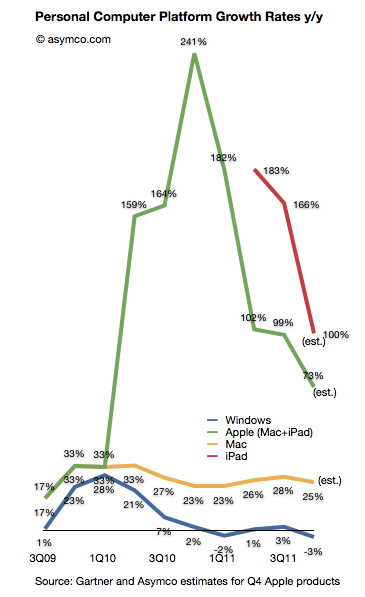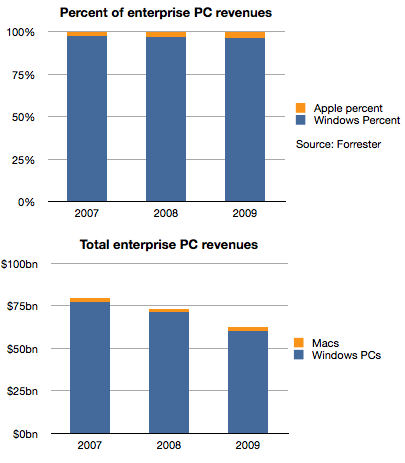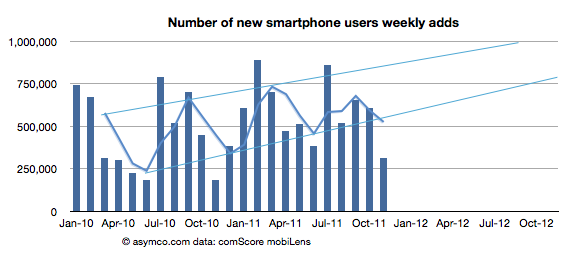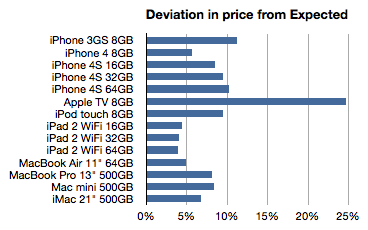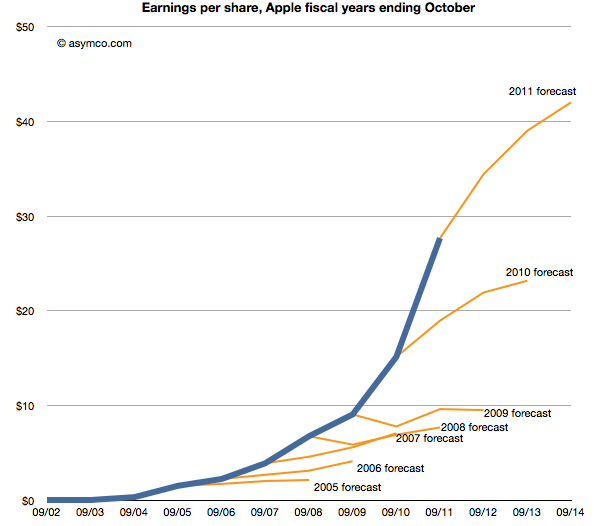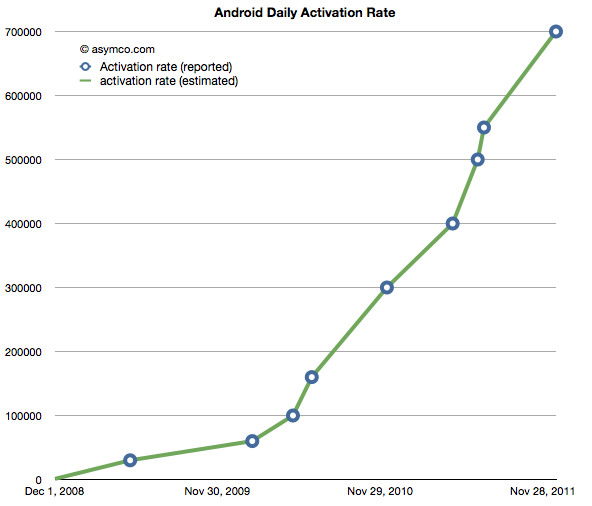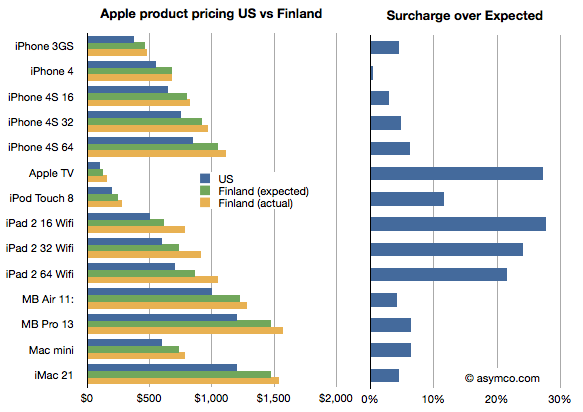The iPad and Mac businesses both grew well in the last quarter. Tim Cook said they are observing some cannibalization of Mac from the iPad but much more switching to iPad is coming from the Windows PC market.
The evidence is still hard to pin down directly but the fact that PC sales (excluding the Mac) are down gives credence to the claim. Mac growth, in contrast, is largely unaffected. The following chart shows the the iPad volumes vis-a-vis Mac volumes and the Mac growth through recent history.
The iPad has out-sold the Mac since inception and is now about three times the volume. However, the growth rate in the Mac has not changed much.
The impact on the PC market has been discussed recently and the data in the following chart is an update given more precision on the units from Apple: Continue reading “The year of the iPad for the second year in a row”


